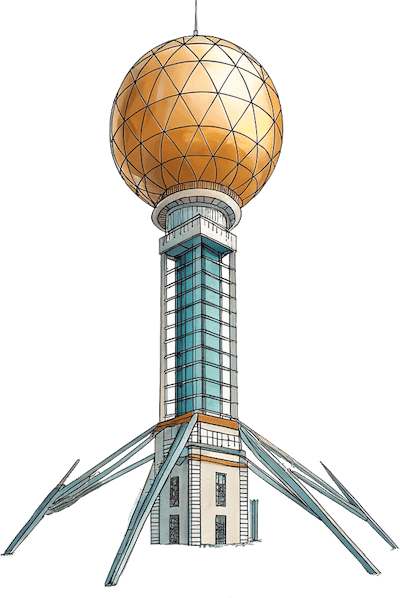



 Welcomes you to Aug 3-8
Welcomes you to Aug 3-8 
to Friday, August 8, 2025
Conference Registration
We use email to track your registration, so make sure to use the same email address every time!
A Message from Dr. Betty Kutter
Greetings, my dear phage family,
More than 50 years ago, we built the Evergreen Phage Meeting as a place for discovery, collaboration, and the relentless pursuit of phage science. What a journey it has been! Though I won’t be there in person this year, my heart is with you all as you continue to push the field forward.
Evergreen has been one of the greatest experiences of my life, and I am grateful to see the Phagebiotics Research Foundation carrying this legacy into the future. Keep asking big questions, forging new connections, and sharing knowledge—because that’s what makes this community truly special.
Wishing you all a fantastic meeting and many more to come!
With gratitude,
Dr. Betty Kutter
50 Years of Innovation Meets Southern Hospitality
For the first time in its history, the legendary Evergreen Phage Meeting is coming to Knoxville, Tennessee! This milestone event marks a new era of accessibility, collaboration, and scientific breakthroughs.
📅 August 3-8, 2025 | Knoxville, TN
Organized by the Global Phage Community
Led by Ria Kaelin (Phagebiotics) & Tom Denes (UT Knoxville) in collaboration with PhageDirectory
Honoring Dr. Betty Kutter
This year, we celebrate not just the future of phage science but also the extraordinary legacy of Dr. Betty Kutter. After more than 50 years of groundbreaking research and mentorship, Betty has transitioned to Emeritus Leader—but her impact endures.
Evergreen wouldn’t exist without her vision, dedication, and passion. Join us as we honor Betty and the pioneers who shaped phage science, ensuring their legacy continues to inspire future generations.
🌟 The Legacy Gala Dinner | August 6
A special evening at The Press Room dedicated to the greats of phage biology.
A Conference Like No Other
🔬 Cutting-Edge Scientific Program
- Intensive workshops with field leaders
- Poster sessions designed for collaboration
- Dynamic talks & pop-up discussions
- Real-time problem-solving sessions
🎬 Unforgettable Community Events
- Film Screening — Last Chance to Save a Life (IMDB) + Panel Discussion | August 4 | Bijou Theater (est. 1909)
- Unconferencing – Pop Up Connections, Stay Tuned 😃
🎟 Your All-Access Registration Includes
5 Days of Great Phage Science Sunday - Thursday AUG 3 - 8, 2025
- Full Scientific Program (Mon - Thur)
- Workshops (Sunday)
- Dr. Ramy Aziz - Phage Genomics in an AI era
- Dr. Tobi Nagel - Phages For Global Health
- More to come- Stay Tuned!
Meals & Refreshments
- Breakfast Grab Bag -(Mon–Thur) Breakfast option for your hotel stay
- Daily Lunch (Sun–Thurs) + Coffee, Tea & Snacks
- Gala Dinner (Wednesday Night)
- Two Poster Sessions – (Tue & Thur) Apps, Wine & Cheese + Ice Cream Social
Extras
- Evergreen 2025 T-shirt & Sticker
- Phage Film Night – (Monday) Movie ticket included
- Digital Abstract Book
- Hotel-to-Conference Transportation
Affordable & Accessible
We’re committed to making Evergreen 2025 inclusive & budget-friendly with:
✔️ Discounted hotel rates & room-sharing coordination
✔️ Complimentary transportation & walkable downtown access
✔️ Maximized value with meals, networking, and scientific engagement
Be Part of History
Evergreen aims to be more than just a conference—it strives to foster a community, build a lasting legacy, and contribute to the future of phage science. 🚀 Join us in Knoxville.
Questions? Contact us—we’re here to help. info@phagebiotics.org
🔗 Register Now & Shape the Future of Phage Science
The next chapter of phage science is being written—your voice belongs in it.
Abstracts
This year we are focusing on the following tracks:
Phage Biology, Evolution, Ecology, and Therapeutics: Continuing the core tracks that built Evergreen’s legacy
Diagnostics: Phage-based tools for infection detection and microbiome analysis.
Regulation & Policy: Navigating the evolving landscape of phage therapy approvals and global standards.
Biomanufacturing & Scale-Up: Bridging research and industry to bring phage-based products to market.
From Classroom to Career: Connecting students, postdocs, and industry leaders to foster professional growth.
Please submit your abstract as soon as possible, as they are accepted on a rolling basis.
If you need a Visa Letter, you must submit your abstract before requesting a visa letter!
All abstracts have a 4,000 character limit for the body of the abstract. Brevity is the soul of wit.
Abstract Deadlines:
- Oral Presentations are due June 9th 2025
- Posters are due June 27th 2025
- Poster sizes: are 24×36 inches (60.96cm×91.44cm) (yes, they are smaller than normal!), and can be printed in Knoxville for $35 with tax. Matte paper type with no lamination and no mounting is preferred. Upload your posters to be printed here: https://local.fedex.com/en-us/tn/knoxville/office-0501 by July 31, and we will pick them up and have them ready for you by check-in.
- Double check that your selected address is: 2010 Cumberland Ave. Suite 4 Knoxville, TN 37916 Please indicate for in-store pickup: Phagebiotics or Dan Bryan
Pricing
For groups of 5 or more, email Ria at ria@phagebiotics.org for a group discount!
| Early Bird Student | $650 USD |
| Early Bird Academic & Government | $750 USD |
| Early Bird Industry | $1,000 USD |
| Student | $750 USD |
| Academic & Government | $850 USD |
| Industry | $1100 USD |
Hotel Pricing
Marriott Discount link: https://www.marriott.com/event-reservations/reservation-link.mi?id=1741788650055&key=GRP&guestreslink2=true&app=resvlink
Hilton Discount link: https://www.hilton.com/en/book/reservation/rooms/?ctyhocn=KNXKHHF&arrivalDate=2025-08-03&departureDate=2025-08-09&groupCode=PHAGE&room1NumAdults=1&cid=OM%2CWW%2CHILTONLINK%2CEN%2CDirectLin
| Downtown Marriott | $186/night | 2 Queens, 525 Henley St, Knoxville, TN 37902 |
| Downtown Hilton | $169/night | 2 Queens, 501 W Church Ave, Knoxville, TN 37902 |
| The Tennesseean Hotel | $208/night | King or Queen option, 531 Henley St, Knoxville, TN 37902 |
Interested in volunteering?
Please reach out to Ria at ria@phagebiotics.org
Find bugs in the website? Contact Jan at jan@phage.directory

